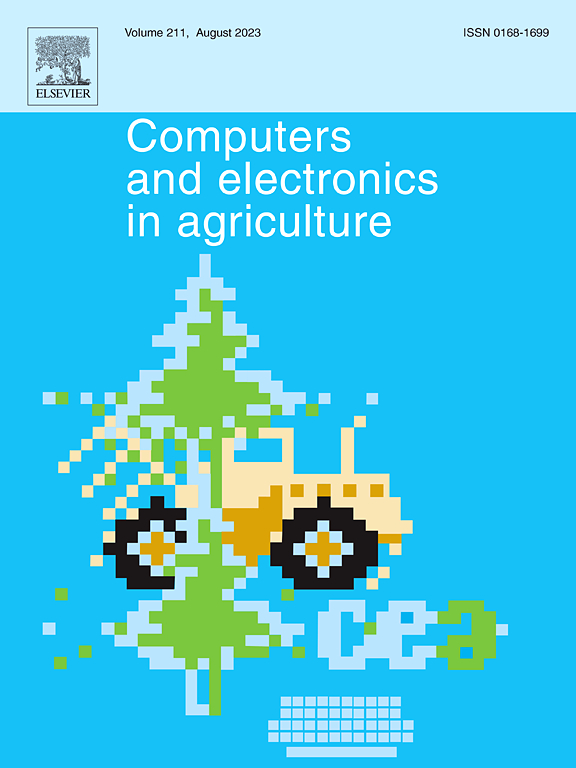一种用于评估妊娠母猪生理参数和热应激的机器学习系统
IF 8.9
1区 农林科学
Q1 AGRICULTURE, MULTIDISCIPLINARY
引用次数: 0
摘要
热应激极易影响母猪生产性能,造成巨大的经济损失。虽然已经开发了许多模型来评估热应激,但大多数模型都是针对人、牛或仔猪建立的,这些模型不适用于母猪。本研究专门开发了极限梯度提升(XGBoost)算法,用于预测妊娠母猪的生理参数,包括皮肤温度、直肠温度和呼吸速率,这些参数在反映热应激中起着至关重要的作用。采用最佳生理参数预测模型对母猪热应激进行评估,建立预警系统。数据集(1029)来自某商业养猪场,包括猪舍内的温度、相对湿度和风速等环境参数(作为输入数据)和母猪的生理参数(作为输出数据)。结果表明,预测母猪皮肤温度的模型(skin temperature model of sows, STMS)的性能最好,XGBoost算法在处理非线性问题方面具有优势,较线性算法有明显改进。此外,通过集成使用STMS和LabVIEW确定的热应力阈值,开发了母猪猪舍的生理参数和热应力评估系统,提供了新的技术解决方案和有价值的见解。本文章由计算机程序翻译,如有差异,请以英文原文为准。
A machine learning system to evaluate physiological parameters and heat stress for sows in gestation crates
Heat stress can easily affect the sow production performance to make huge financial loss. Although many models have been developed to evaluate heat stress, most of them are built for humans, cows, or young pigs, which could not well used in sow. In this study, the extreme gradient boosting (XGBoost) algorithm was specially developed to predict the physiological parameters of sows in gestation crates, including skin temperature, rectal temperature, and respiration rate, which play crucial roles in reflecting heat stress. The best physiological parameter prediction model was used to evaluate the heat stress of the sow and built the warning system. Datasets (1029) were collected from a commercial pig farm, which included environmental parameters of temperature, relative humidity, and air velocity inside the sow house (used as input data), and physiological parameters of sows (used as output data). The results showed that the model to predict skin temperature (skin temperature model of sows, STMS) got best performance, and the XGBoost algorithm had advantages in dealing with nonlinear problems achieving a significant improvement over the linear algorithm. Additionally, a physiological parameters and heat stress assessment system for sow housing was developed by integrating a heat stress threshold determined using STMS with LabVIEW, offering both a new technological solution and valuable insights.
求助全文
通过发布文献求助,成功后即可免费获取论文全文。
去求助
来源期刊

Computers and Electronics in Agriculture
工程技术-计算机:跨学科应用
CiteScore
15.30
自引率
14.50%
发文量
800
审稿时长
62 days
期刊介绍:
Computers and Electronics in Agriculture provides international coverage of advancements in computer hardware, software, electronic instrumentation, and control systems applied to agricultural challenges. Encompassing agronomy, horticulture, forestry, aquaculture, and animal farming, the journal publishes original papers, reviews, and applications notes. It explores the use of computers and electronics in plant or animal agricultural production, covering topics like agricultural soils, water, pests, controlled environments, and waste. The scope extends to on-farm post-harvest operations and relevant technologies, including artificial intelligence, sensors, machine vision, robotics, networking, and simulation modeling. Its companion journal, Smart Agricultural Technology, continues the focus on smart applications in production agriculture.
 求助内容:
求助内容: 应助结果提醒方式:
应助结果提醒方式:


